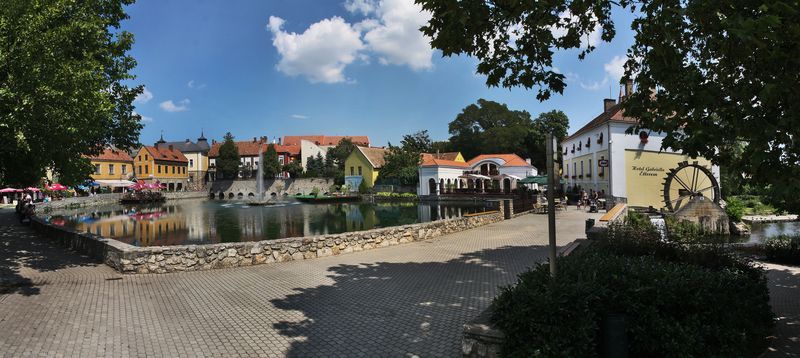Sightseeing in Tapolca
Table of contents
Lake Cave Visitor Centre
The Cave, which is a unique spectacle in Central – Europe , can be found in the heart of the town. It was discovered in 1902 during a welldigging and ten years later it opened to the visitors. The lower chambers and some parts of the upper corridors of the three-level cave shaped by karst waterare covered by 19 C̊ water. This is a 180-metre-long stretch which can be travelled around by boat. In the clear water the paths that lead to the lower chambers can also be seen. The healing power of the Cave’s special climate has been known
for a long time. The extremely clean air, the relatively constant temperature (14-16C) and the 100% humidity are of great help in the treatment of the patients suffering from
allergy, asthma or other respiratory illnesses. In order to be able to do this another branch the Hospital-cave is used. This was discovered in 1925.
https://www.bfnp.hu/en/latogatohely-1/tapolca-lake-cave-visitor-centre-tapolca-tapolca
Mill Pond Lake
The part of the town which has a very romantic and Mediterranean atmosphere is the Mill Pond and it is surroundings. The Upper-Pond can be reached from the Main Square through a nice and small backyard. At the Pond the monument of János Batsányi a local born poet welcomes the visitors. The hot water springs that have their sources here, were banked up by the ancient Romans and used for the mill. Tapolca was given its name after these springs. Throughout the centuries the mill has been rebuilt several times, now it is used as a hotel. It has been named after Gabriella Baumberg the wife of János Batsányi. At the lake-side of the Lower-Lake the memorial of Gabriella and the Holy-Fount (with the Madonna by Erzsébet Udvardy) can be found. The Church- Hill which is located next to the Mill Pond is the historical base of the town, where people settled in the Modern Stone Ages.

Garden of Ruins
The medieval centre of Tapolca is located on the Church-Hill. The church was built in the 13th century in Roman style onto the place of an older chapel and was surrounded by the wall of the castle. It was rebuilt in Baroque style after the Turkish invasion in 1756. The slightly elevated wall of the medieval castle stands in front of the Roman Catholic Church. The artwork: „Our Past” (by László Marton) stands on the basic wall built by the ancient
Romans. The gate and the „wolfditch” of the castle from the 17th century were excavated at the northern end of the present school building. The monument of King Saint István the „State-establisher” stands next to the Garden.
School Museum
The school Museum can be found in the former cantor house. Thegreatest pedagogy historical collection of the Trans – Danubian region can be found here. The class that
used to be a real school- reminds us of the lessons in the turn of the century. The school historical exhibition can be seen next door to the cantor teacher’s room
Republic Square
In the other former marketplace of the townthelocal government erected a monument to the memoryofthe „Large-Hungary”, the territory of which was roughly reduced as a result of the Trianon peace-treaty after the 1st World War. The Memorial can be approached through the „Székely-kapu” (székely: inhabitant of Transylvania, székelykapu: a large gate with fretworks).

